Polar bears, the iconic predators of the Arctic, face unprecedented challenges as their environment transforms due to climate change. These magnificent creatures, scientifically known as Ursus maritimus, have long been specialized hunters of seal species on sea ice. However, as Arctic sea ice diminishes at alarming rates, polar bears are demonstrating remarkable behavioral adaptations in their hunting strategies. This article explores the fascinating and sometimes concerning ways these apex predators are modifying their hunting tactics to survive in a rapidly changing ecosystem, highlighting both their resilience and vulnerability in the face of environmental transformation.
The Traditional Hunting Method: Sea Ice Ambush
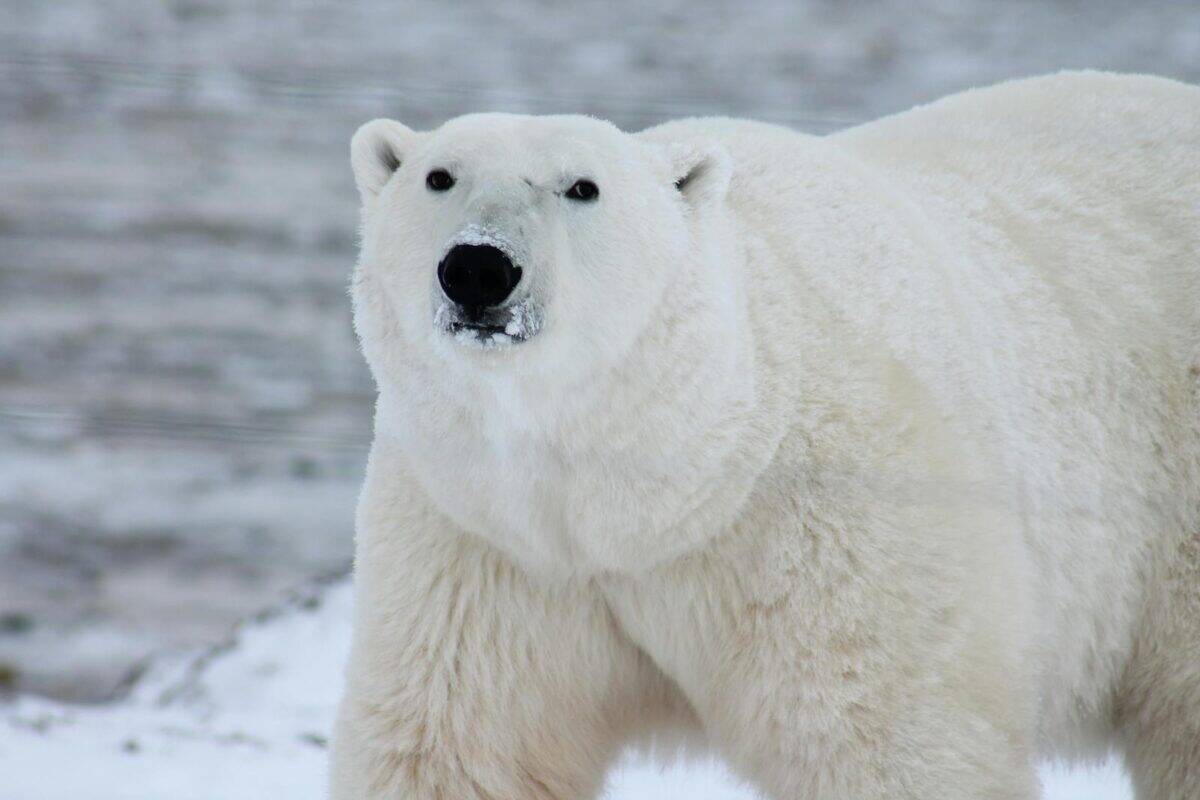
Historically, polar bears have relied on a specialized hunting technique perfectly adapted to Arctic conditions. Their traditional method involves patiently waiting beside breathing holes in the sea ice where seals surface for air. When a seal emerges, the polar bear uses its immense strength to pull the prey onto the ice. Alternatively, they stalk seals resting on ice floes, utilizing their white coat as camouflage against the snow and ice.
This hunting strategy has been remarkably effective, with success rates estimated between 10-20% for adult bears—considerably higher than many other large predators. The sea ice platform provides polar bears with the perfect vantage point to access their prey, as they cannot outswim seals in open water. This hunting technique has sustained polar bear populations for thousands of years, allowing them to thrive in one of Earth’s harshest environments.
Climate Change: The Game Changer

Climate change has dramatically altered the polar bear’s hunting landscape. Arctic sea ice has been declining at a rate of approximately 13% per decade since satellite records began in 1979, according to the National Snow and Ice Data Center. This decline means the bears’ primary hunting platform is literally melting away. The ice-free period in the Arctic has extended by 3-4 weeks in many regions compared to the 1980s, forcing bears to spend more time on land or swimming in open water.
The timing of ice formation and breakup has also shifted, disrupting the bears’ access to prime seal hunting during critical periods, particularly in spring when ringed seal pups are born. These changes directly impact hunting success, nutritional intake, and ultimately survival rates. Scientists from the U.S. Geological Survey project that two-thirds of the world’s polar bears could disappear by 2050 if current warming trends continue, underscoring the severity of this environmental challenge.
Increased Swimming Behavior
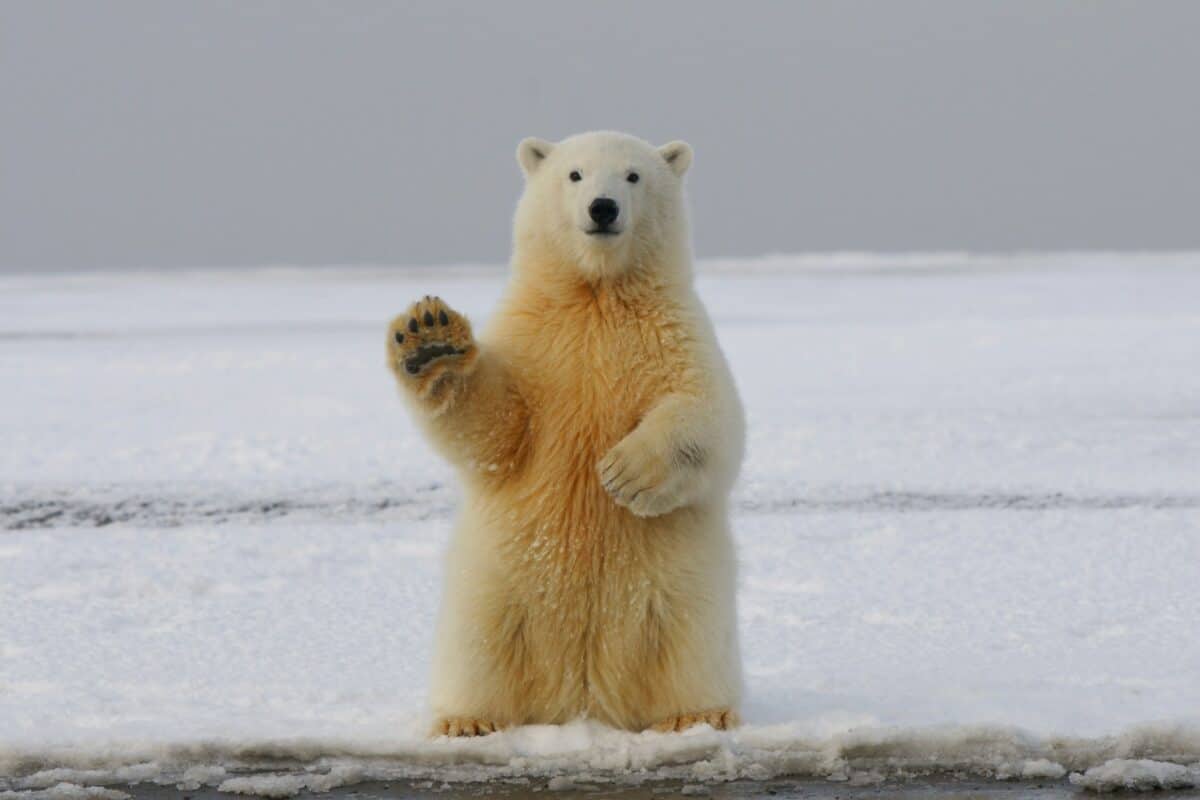
As sea ice fragments and retreats, polar bears are swimming more frequently and for longer distances than ever documented before. Research published in Ecography has recorded bears swimming more than 400 miles (650 km) continuously—a remarkable feat for a terrestrial mammal. These marathon swims represent a significant shift in hunting behavior, as bears attempt to traverse the growing expanses of open water between ice floes.
While polar bears are powerful swimmers, these extended aquatic journeys consume tremendous energy and carry substantial risks. Cubs are particularly vulnerable during these swims, with documented increases in mortality. Tracking studies using GPS collars show that the frequency of long-distance swims has increased significantly over the past two decades. This adaptation demonstrates the bears’ remarkable physical capabilities, but also highlights the energetic costs and risks they now face while searching for food in an increasingly aquatic environment.
Shifting to Land-Based Hunting

With diminishing sea ice access, many polar bear populations are spending extended periods on land, necessitating alternative hunting strategies. Researchers have documented increasing attempts to hunt terrestrial mammals, including caribou and reindeer in some regions. These hunts require different skills than seal hunting, as polar bears must chase prey rather than ambush it—a challenging proposition given their build is optimized for short bursts of power rather than sustained pursuit.
Observations from the western Hudson Bay and Alaska’s North Slope show bears attempting to stalk caribou herds, though success rates appear significantly lower than their traditional seal hunting. The energy expenditure required for these terrestrial hunts often exceeds the caloric gain, creating an unfavorable energy balance. Despite these challenges, the behavior demonstrates polar bears’ adaptive capacity when faced with environmental change, though it’s unlikely to fully compensate for lost sea ice hunting opportunities.
Bird Colony Exploitation
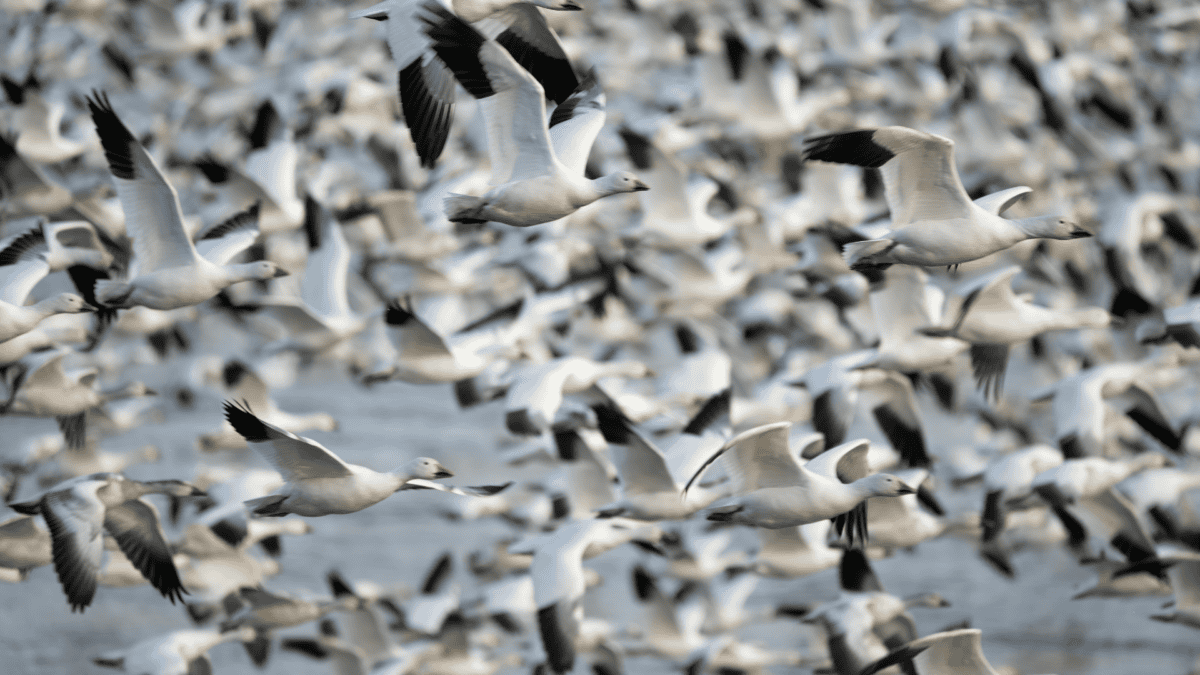
One of the most documented alternative food sources for polar bears is bird eggs from colonial nesting sites. Studies from Norway’s Svalbard archipelago and Canada’s Hudson Bay show increasing predation on seabird colonies, particularly common eiders, thick-billed murres, and snow geese. Bears have been observed systematically raiding nests along cliff faces and on small islands—locations previously safe from predation when bears remained on sea ice during summer months. Research published in Frontiers in Ecology and Evolution documented individual bears consuming hundreds of eggs in single foraging bouts.
While nutritionally valuable, these eggs are only seasonally available and their total caloric contribution remains relatively small compared to the bears’ preferred seal diet. Additionally, this predation can have significant negative impacts on bird populations not evolutionarily adapted to mammalian predators. This targeting of bird colonies represents an opportunistic adaptation rather than a sustainable alternative to seal hunting.
Cooperative Hunting Behaviors

Traditionally viewed as solitary hunters, polar bears have recently displayed more instances of cooperative hunting in some regions. Researchers in the Beaufort and Chukchi Seas have documented multiple bears working together to hunt beluga whales trapped in small openings in the ice, known as polynyas. These cooperative events allow bears to target larger prey than individually possible. Similar behaviors have been observed when bears encounter whale carcasses along coastlines, with dominance hierarchies determining feeding access but with less aggression than historically observed—possibly because food stress makes sharing more advantageous than fighting. While still relatively uncommon, these cooperative behaviors may represent an emerging adaptation to food scarcity, as social hunting can increase success rates when targeting certain prey. The frequency of these cooperative events appears to be increasing in areas with the most significant sea ice loss, suggesting environmental pressure may be driving this behavioral shift.
Scavenging and Whale Fall Utilization

Polar bears have intensified their utilization of whale carcasses and other scavenging opportunities as traditional hunting becomes more challenging. “Whale falls”—carcasses of bowhead, gray, or beluga whales that wash ashore—have become critical feeding opportunities for bears in coastal areas. Research in Alaska and Russia has documented dozens of bears congregating at single whale carcasses, something rarely observed in previous decades.
These carcasses provide enormous caloric resources, with a single bowhead whale potentially feeding numerous bears for weeks. Bears now appear to travel along coastlines more systematically, apparently searching for these scavenging opportunities. GPS collar data shows bears making deliberate movements toward known carcass locations, sometimes from over 100 miles away, suggesting possible memory or communication of these food sources. While beneficial, these resources are unpredictable and unevenly distributed, meaning they cannot fully replace lost seal hunting opportunities for most populations.
Increased Predation on Walrus
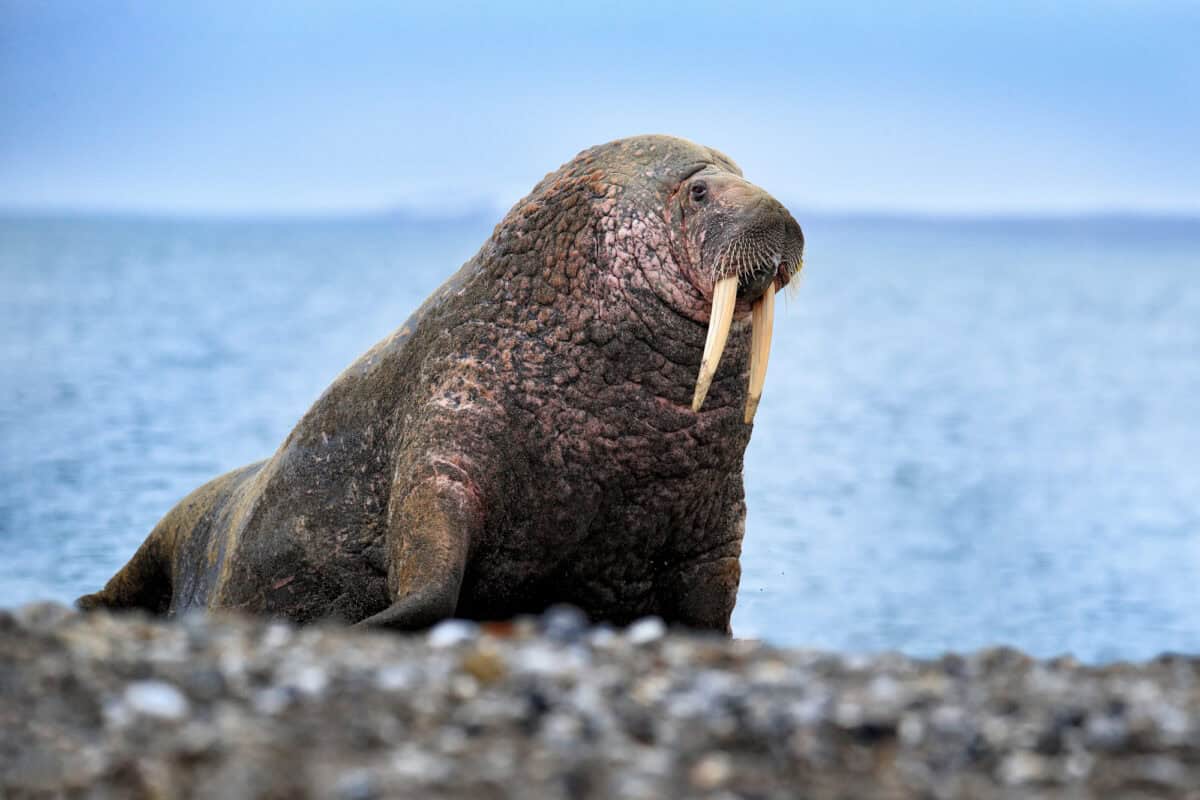
As traditional seal prey becomes less accessible, some polar bear populations have increased their predation attempts on Atlantic and Pacific walrus. This represents a significant tactical shift, as adult walruses—weighing up to 1.5 tons with formidable tusks—pose substantial dangers to hunting bears. Researchers in Russia’s Chukchi Sea region and around Svalbard have documented more frequent hunting attempts on walrus haul-outs, particularly targeting juveniles. These attacks often involve different techniques than seal hunting, with bears sometimes attempting to separate younger walruses from protective adults or creating stampedes that result in injuries or separated young.
The energetic costs and physical risks of walrus hunting are considerable, with documented cases of bears sustaining serious injuries from walrus tusks. Nevertheless, successful walrus predation provides substantial caloric rewards, making it a high-risk, high-reward adaptation. This hunting behavior appears most common in subadult male bears, possibly because their greater size provides advantage while their need to establish territories motivates risk-taking behavior.
Temporal Shifts in Hunting Patterns

Another notable adaptation involves changes in the timing of hunting activities. Traditionally, polar bears have been primarily diurnal hunters, matching their activity to seal behavior patterns. Recent studies using activity sensors on tracking collars show increasing nocturnal hunting attempts in some populations, particularly during summer months. This shift may represent attempts to hunt during cooler periods to avoid heat stress, or to exploit changing seal behavior patterns.
In the Barents Sea region, researchers have documented bears hunting during darker hours when seals may be less vigilant. Similarly, dawn and dusk hunting has increased in western Hudson Bay, potentially coinciding with periods of higher seal activity at breathing holes. These temporal adaptations demonstrate the bears’ behavioral plasticity and may provide marginal hunting advantages in a changing environment. However, such shifts also indicate stress responses as bears attempt to maintain hunting success under increasingly challenging conditions.
Cannibalism and Infanticide

Perhaps the most concerning behavioral change is the apparent increase in cannibalistic behavior among polar bears. While intraspecific predation has always occurred at low levels in this species, researchers in the Beaufort and Barents Seas have documented higher frequencies of adult bears killing and consuming smaller bears, particularly cubs. A 2020 study published in Arctic Science reported multiple instances of adult males actively hunting smaller bears rather than opportunistically scavenging them—behavior rarely observed in historical records.
This represents a dramatic shift from traditional hunting and likely indicates severe nutritional stress. Scientists emphasize this behavior remains relatively rare but appears correlated with longer ice-free periods and reduced seal access. Such behavior demonstrates not just tactical hunting changes but potential breakdown of normal social constraints under extreme environmental pressure. While scientific documentation remains limited to specific regions, Inuit hunters across the Arctic have reported similar observations, suggesting this may be occurring more widely than formally documented.
Human-Wildlife Conflict and Food Conditioning
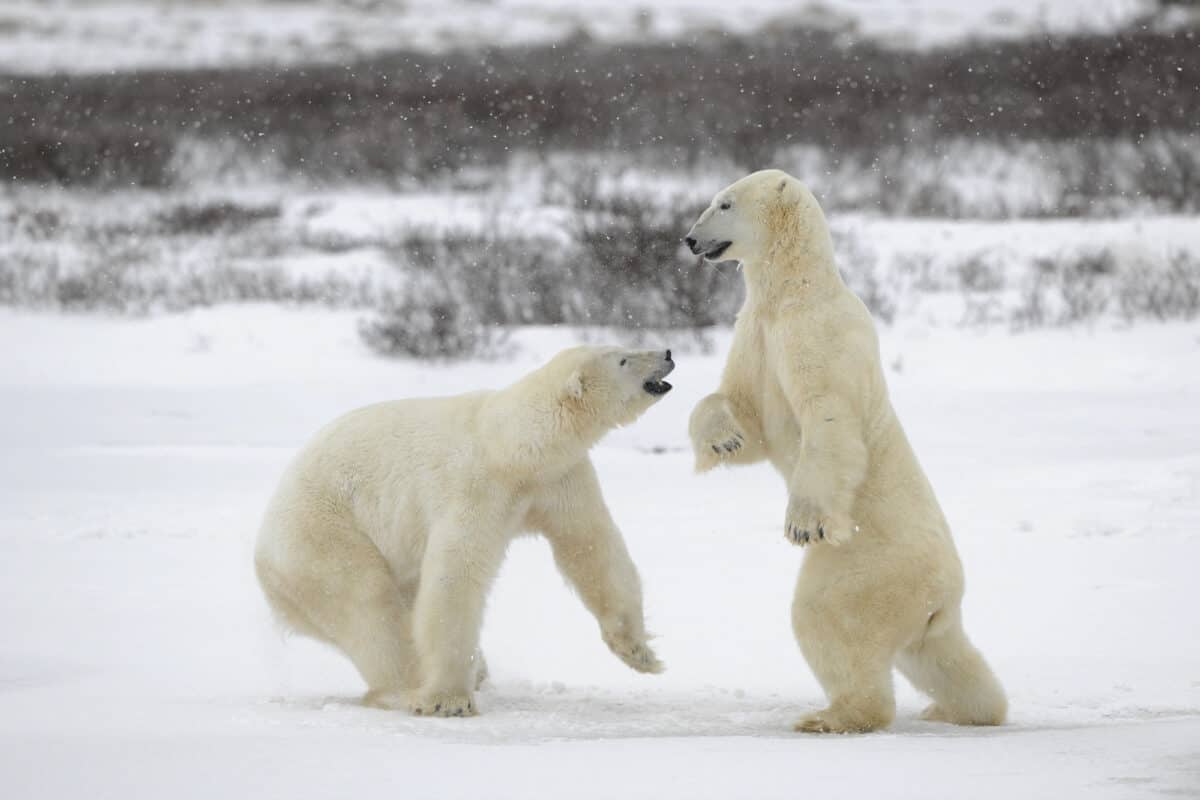
As their natural hunting success decreases, some polar bear populations have increased their association with human settlements, creating new conflict scenarios. Communities across the Arctic, from Alaska to Greenland and Russia, report increasing numbers of bears seeking food in garbage dumps, stored food caches, and hunting camps. This represents a significant behavioral adaptation, as polar bears historically maintained considerable distance from human activity.
In the Canadian community of Churchill, Manitoba, polar bear incursions increased by over 50% between 2000 and 2010 according to provincial wildlife management data. In Svalbard, Norway, similar patterns have emerged despite stringent waste management protocols. This food conditioning behavior demonstrates the bears’ intelligence and adaptability but creates dangerous situations for both humans and bears. While not hunting in the traditional sense, this resource acquisition strategy reflects the species’ flexibility when faced with food scarcity and represents another way the species is modifying its food acquisition behavior in response to environmental changes.
Regional Variations in Adaptation

Importantly, polar bear hunting adaptations show significant regional variation across their circumpolar range. The nineteen recognized subpopulations face different challenges based on local ice conditions, prey availability, and topography. Bears in the southern Beaufort Sea have shown more dramatic hunting changes than the more stable northern Beaufort population. Similarly, Hudson Bay bears exhibit more terrestrial hunting behavior than bears in the High Arctic archipelago. These variations highlight how local conditions influence adaptation potential. Some populations appear better positioned to adapt than others—those with access to productive terrestrial ecosystems or alternative marine prey may demonstrate greater behavioral plasticity.
Genetic studies suggest some regional populations may have historical experience with ice-free periods, potentially providing adaptive advantages. Research from the University of Alberta indicates that bears from the Chukchi Sea show greater dietary diversity than other populations, suggesting regional differences in adaptation capacity. These variations make it difficult to predict how the species as a whole will respond to continued environmental change, though most projections remain concerning for the majority of populations.
The Future of Polar Bear Hunting

The ongoing changes in polar bear hunting behavior raise important questions about the species’ future. While their demonstrated adaptability showcases remarkable behavioral plasticity, most scientific evidence suggests these adaptations provide insufficient caloric returns to fully compensate for traditional seal hunting on sea ice. Nutritional analysis shows terrestrial food sources typically offer lower fat content than marine mammals, creating challenges for polar bears evolved to thrive on high-fat diets. Projections from the International Union for Conservation of Nature indicate continued population declines are likely for most subpopulations, despite these behavioral adaptations.
Conservation approaches increasingly focus on protecting key habitat areas where hunting adaptations appear most successful. The species’ capacity to modify hunting behaviors provides some hope, yet the pace of environmental change may ultimately outstrip adaptation potential. As apex predators requiring vast territories and specific prey resources, polar bears face continued challenges that will likely reshape Arctic ecosystems regardless of how successfully they modify their hunting tactics. Our understanding of their adaptability continues to evolve, much like the bears themselves.
- The Island Where Endangered Birds Are Making a Comeback - August 9, 2025
- Could the Ogallala Aquifer Run Dry in Our Lifetime? - August 8, 2025
- The Fish That Can Bite Through Bone - August 8, 2025

